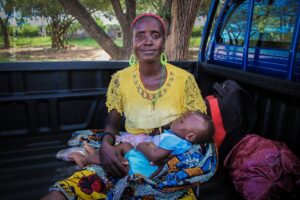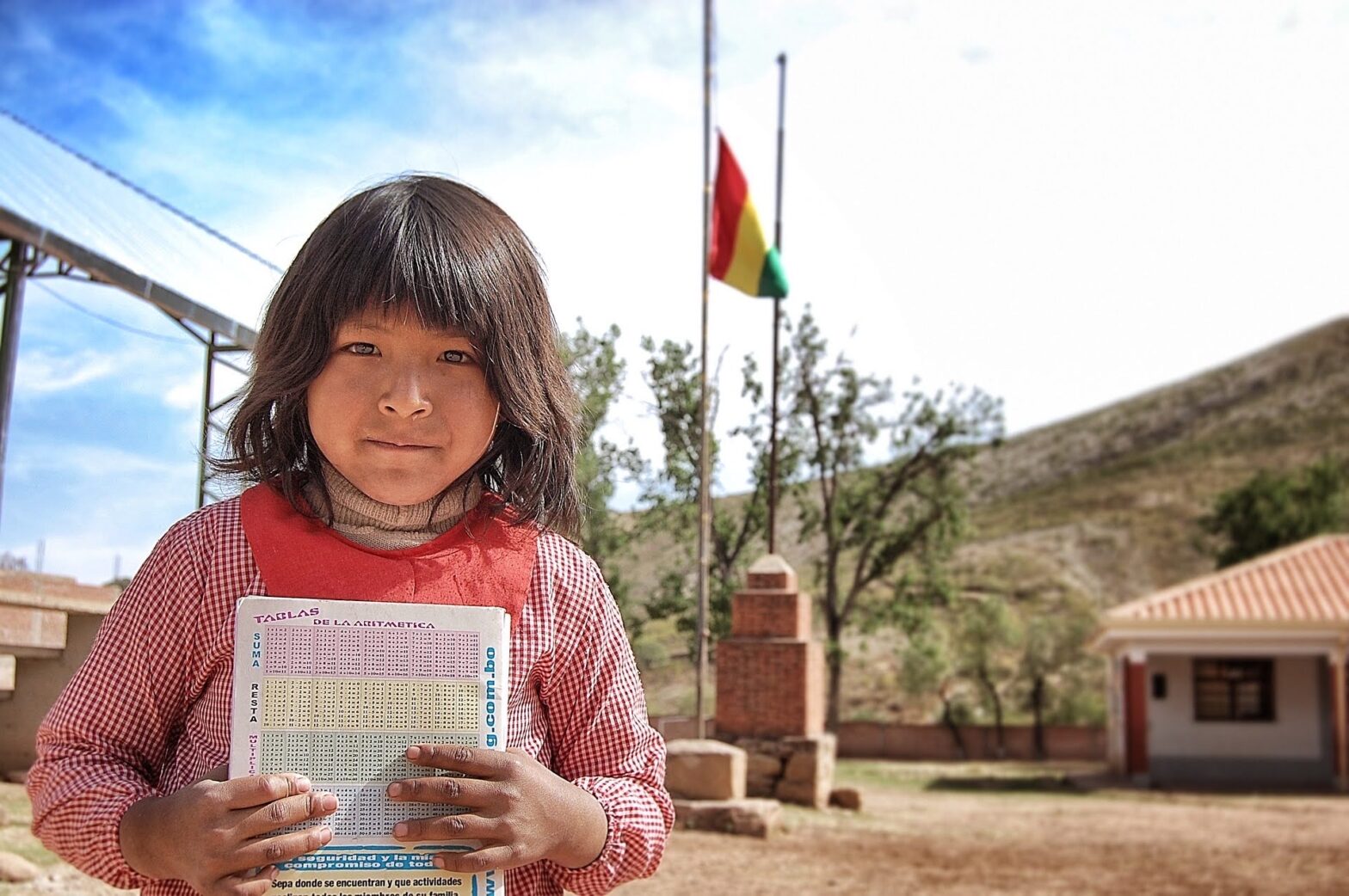Global Healthcare in 2021:
What’s Your Role?
Quick Summary:
The most important theme of Global Healthcare in 2021 is disparity:
• Statistics show that access to healthcare, the quality of healthcare, and the societal impact of healthcare still differs significantly between the developed and developing world.
• The evolution of COVID-19 vaccinations appears to further this history into 2021.
Some encouraging work has been made:
• Pharmaceutical companies have set important goals in increasing access to medicine and strengthening health systems/supply chains.
Devoted Skies recognizes our uniqueness amongst other organizations, NGOs and institutions:
• We use an “A to B redistributive approach” that requires less of an infrastructural and bureaucratic approach to affecting change in the regions we serve.
• We focus on life-long partnerships in our work.
We hope that the report can help you to better understand the impact that you can make, given the recent history and current state of Global Healthcare.
Global Healthcare in 2021 is a multi-layered subject.
The past decades have seen inspiring improvements in medicine and healthcare technology, trillions of dollars donated in medical aid, and the successful eradication and treatment of devastating diseases. 2021, thus far, has continued that trend; COVID-19 vaccinations have become increasingly available and millions of people across the developed world are receiving their first and second doses.
Simultaneously, we have seen an unanswered demand for medical needs, an inequitable distribution of basic medical resources, and an observable gap in healthcare equity. This, too, is a trend that has continued in 2021: vaccination access in the developing world is limited and there is currently insufficient action against diseases that affect much of the global south.
It’s within this reality that we acknowledge a truth: in 2021, the state of Global Healthcare is one full of disparities. Understanding these disparities, the current actions to counter them, and the role that we can play in solving them are our next steps towards a more equitable healthcare future.
Unfortunate Reality
Historically, Global Healthcare disparities, or the differences in healthcare between countries and regions around the globe, has primarily existed within traditional divisions: “The Global North” vs. “The Global South,” “The Developed World” vs. “The Developing” or “Underdeveloped World,” and high-income countries vs. low-income countries. Excluding a small number of outlying countries, healthcare disparities have remained in line with these divisions throughout recent years.

While there are many differing elements between each country’s healthcare systems, three categories best underscore the larger theme of disparity: access to healthcare, the quality of the offered healthcare, and the societal impact of healthcare.
Universal access to basic healthcare is far from the current reality in the world; it is the goal that many of us non-profits are working towards. To aid this journey to better access, the World Bank has developed a useful measure of the current healthcare access within each of the world’s countries: The 2017 Universal Health Coverage (UHC) index. The UHC index is a scale from 0-100 that depicts the ability of a country’s population to access healthcare “without financial hardships.” In this analysis of access, Nigeria, Haiti, and Ghana received low scores of 42, 49, and 46, respectively. In contrast, the US, UK, and Canada received high scores of 84, 87, and 89, respectively. The pattern is somewhat obvious in the data: more developed, high-income countries tend to have high scores from 70-95, while less-developed countries tend to have disappointing scores around 45. In this pattern, we can begin to observe the correlation between a country’s income and their population’s healthcare access.
Alongside the essential element of healthcare access is quality of healthcare. Although there are many ways to measure this quality, one of the most telling factors is the condition of healthcare facilities. In a 2018 study of health facilities throughout low- and middle-income countries, the International Journal of Hygiene and Environmental Health measured two essential statistical categories: access to handwashing or disinfectant, and access to latex gloves. The results proved that, on average, only 62.2% of healthcare facilities had access to either soap and running water or alcohol-based hand disinfectant in lower- and middle-income countries. Additionally, approximately one out of every four healthcare facility in low- and middle-income countries does not have access to latex gloves. These measurements and their results depict the lack of resources that many developing countries face. To provide context, in 2019 Forbes reported the US Health System wastes more than $935 billion every year on healthcare. As a nonprofit, we can’t stop our imagination after hearing that number: What would the world look like if a sizeable amount of those wasted resources were redistributed to low- and middle-income countries correctly?
Beyond the access and quality of healthcare around the globe, the societal impact of a country’s healthcare is essential for understanding disparities. Societal impact is the effectiveness of the provided healthcare in preventing and treating sickness, deaths, and other health issues. Here, too, the global disparities are clear across two statistical categories: tuberculosis death rate, and infant mortality rate (as measured in 2019 by the world bank). The tuberculosis death rates per 100,000 people in India, the Democratic Republic of the Congo, and Nepal were 32.0, 49.0, and 58.0, respectively. For high-income countries Belgium, Australia, and Argentina, the death rates were 0.3, 0.4, and 1.3, respectively. Similarly, for developing countries Cameroon, Dominica, and Mali the infant mortality rates per 1,000 live births were 50.2, 30.9, and 60.2, respectively. In contrast, more developed countries like France, Spain, and Japan had rates of 3.8, 2.6, and 1.8, respectively.

These statistical contrasts across access, quality, and effectiveness are both sharp and discouraging. Moreover, they hint at the way health issues will be mitigated in 2021, which is something that has been of international attention recently – mostly due to COVID-19.
COVID-19: Vaccination Rates and What They Tell Us
As put by the World Health Organization, “COVID-19 has hit all countries hard, but its impact has been harshest on those communities which were already vulnerable.” This differing impact illuminates the gaps in healthcare that have existed for decades. Unfortunately, the continuation of these gaps is most notable in the administering of COVID-19 vaccinations.
The reasons behind the differences in COVID-19 vaccination rates around the world are numerous, (e.g., policy, vaccination stigmas, etc.) and far more complicated than one variable. Yet, the geographical and economical patterns from the data on access, quality, and societal impact are perpetuated further in the vaccination rates, which suggests their significance as variables. Most of western Europe tops the list of countries with the highest vaccination rate, while smaller countries from each continent exist within the bottom portion.
More developed countries like Japan and Thailand originally served as outliers in vaccination-rate data at the beginning of March and were amongst the lowest countries in administered vaccinations. Within the past 10 weeks, however, the data shows that Japan and Thailand’s status as more-developed countries has afforded them the chance to rapidly increase their number of administered vaccinations; as of May 27th, Japan ranks 23rd and Thailand ranks 46th in Statista’s data for every country. In this catch-up, the correlation of economic prowess is on display; middle- and lower-income countries have tended to slowly increase their rankings and numbers in vaccinations administered over the last 10 weeks, while two high-income countries made rapid strides.
Encouraging Action
In the vision of a world with higher quality healthcare for all, pharmaceutical companies play an essential role. In many cases, pharmaceuticals control a country’s access to medicine and the strength of community health systems. On a broader scale, their decisions in the research and development (R&D) of certain medicines and vaccinations can affect the course of a disease in certain regions (e.g., tuberculosis, malaria, etc.).
Fortunately, in 2021, pharmaceuticals have taken encouraging steps towards facilitating more equitable and effective healthcare in the regions that need it most. The Access to Medicine Index highlights this positive change in their 2021 report on pharmaceutical companies around the globe. The Access to Medicine Index is a research program by the Access to Medicine Foundation. The program ranks how the world’s 20 largest pharmaceuticals are influencing patient access to the medicine for 82 diseases, conditions, and pathogens in 106 low- and middle-income countries. In their 2021 rankings, the top three pharmaceuticals were GlaxoSmithKline plc, Novartis AG, and Johnson & Johnson. More encouraging, however, is that the program’s 2021 report “Behind the Ranking Numbers” highlighted several positive trends in healthcare:
• The 20 companies in the study have set more specific goals and targets for improving access than in prior years.
• More of the pharmaceuticals are “deploying business models that explicitly include people at the base of the income pyramid.”
• The Pharmaceuticals have engaged in “more and better-quality initiatives to build R&D or supply chain capacities, or strengthen health systems, than in 2018.”
• Pharmaceuticals are focusing more on “systematically ensuring” all their R&D projects are “paired with plans to increase access in poorer countries soon after launch.”
Collectively, these positive steps exemplify the structural change that is needed to mitigate the disparity within global healthcare. Yet, recent work from pharmaceuticals has not been flawlessly implemented and distributed. For example, pharmaceuticals’ current R&D projects and access strategies still tend to overlook low-income countries, and solely target Mexico, Brazil, China and India. Additionally, the R&D for medicines that address COVID, HIV/AIDS, and Cancer has overshadowed the R&D of maternal, neonatal, and tropical-disease products in 2021.

Amidst the positive steps taken by pharmaceuticals – and the flaws in their efforts – it is important to remember that the global disparities in healthcare remain, and, in some locations, widen. It is within this understanding that our organization operates.
Our Shared Role
In designing our approach to positively impacting the future of global healthcare, there is an important perspective that our organization keeps in mind: the stubborn, long-term prevalence of healthcare disparities requires innovative, long-term solutions. We acknowledge each organization’s important role in providing emergency medical relief and ensuring that our actions establish an immediate flow of basic medical resources. However, we are cognizant of the persistent problem of distribution within global healthcare and the way that it has contributed to the disparities that we now witness. Our solution, therefore, is a combined response to this long-term distributive problem: An A to B structure that completely gathers, sorts, and directly distributes surplus medical supplies from developed countries to underserved communities, and a commitment to life-long partnerships with the community organizations and health facilities we interact with. In this way, we are able to achieve the short-term benefits of a traditional donation of medical supplies and a portion of the long-term benefits that a holistic infrastructure rebuild can yield.

To conclude, we hope that you now understand more about the global healthcare disparities, the current actions that are underway to mitigate the disparities, and our unique role. We hope that you also grasp your potential, as a possible donor of funds or supplies, to be a part of the bridge that we’re forming. You can contact us at any time on our website or on our social media accounts below to ask any questions about our organization, discuss healthcare approaches, and make a donation.
Thank you for reading, and we hope you’ll stay devoted with us.
Instagram: @devotedskies https://www.instagram.com/devotedskies/
Facebook: https://www.facebook.com/Devoted-Skies_NJ-NonProfit-102270655212314
LinkedIn: https://www.linkedin.com/company/devotedskies/
Sources:
• Access to Medicine Index: https://accesstomedicinefoundation.org/access-to-medicine-index/results/pharma-companies-inch-forward-in-integrating-access-to-medicine-into-business-practices
• Statista: https://www.statista.com/statistics/1194934/number-of-covid-vaccine-doses-administered-by-county-worldwide/
• Forbes: https://www.forbes.com/sites/brucejapsen/2019/10/07/us-health-system-waste-hits-935-billion-a-year/?sh=7f061eea2f40
• International Journal of Hygiene and Environmental Health: https://www.sciencedirect.com/science/article/pii/S1438463917303760?via%3Dihub
• World Bank: https://databank.worldbank.org/source/health-nutrition-and-population-statistics
• World Health Organization: https://www.who.int/news/item/19-05-2021-world-health-assembly-to-focus-on-ending-covid-19-pandemic-and-preparing-for-next-one
